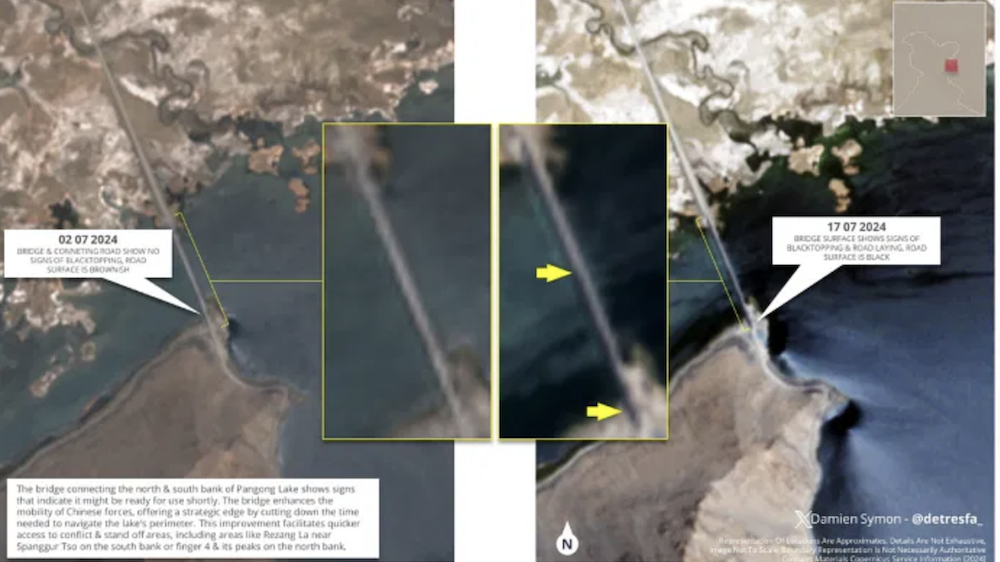Directed by Pema Tseden
Review by Tsering Shakya
Pema Tseden’s “Old Dog” (Khyi rgan) opens with a handsome Tibetan youth riding into a town on his motorbike with an aged, shaggy dog tied to a chain. The youth looks virile and has a strong bodily presence on the screen, but we learn later in the film that he is impotent [reminiscent of Joan Chen’s depiction of a Tibetan man during the Cultural Revolution in “Xiuxiu – The Sent Down Girl”]. “Old Dog” is about the emasculation of body and space in the guise of progress and development. The film deals with the encroachment and destabilizing effect on Tibetan – or perhaps any – culture [not of the Cultural Revolution but] of China’s economic transformation. The film draws from contemporary history by situating the story in the sudden emergence of a feverish appetite among China’s nouveau riche for the mastiffs owned by Tibetan nomads, such that recently a mastiff named Hong Dong sold in China for $1.5 million.
These dogs, used by the nomads to guard their tents and animals, have become an object of desire and a vulgar display of wealth in China. The craze for them has spurred social forces into interaction with remote nomad communities for the first time, through a lucrative trade in the dogs, as well as theft and kidnapping of them, that has forced Tibetan families into choosing between selling their dog before it is stolen or keeping the dog knowing that is most likely to be dognapped sooner or later.
At the start of the film Gonbo, played by amateur actor Loche, is visiting the nearby town to sell his dog to a local Chinese dealer. As the motorbike chugs along the muddy street, there are signs that this is a frontier town under construction, with dirt-track streets deep in mud and half-built houses along both sides of the almost deserted road. The scenes are shot from a distance, giving a sense of the mundaneity of life there. Pema Tseden does not focus on one particular aspect of the town, allowing no close ups or detail shots that might gives us the consolation of getting a sense of its character. No particular subject of focus is allowed or intimacy permitted, depriving the viewer from the illusion of participation, limiting him or her to observing from a distance: we are truly spectators. What we observe from afar is a bleak landscape, the monotony of everyday life and the daily struggle of a family grappling with globalization and pressure from the metropolitan centre.
Gonbo sells the dog, but we learn that he has done it without his father’s approval, because, he argues, “it is better to get some money before the dog gets stolen.” But once the father discovers this, he goes to the town himself to recover the dog, which he has raised for 12 years and is deeply pained to be parted from. The father draws on Tibetan tradition, according to which it is taboo to use dogs as a commodity or to allow them to be bought and sold. “You don’t look like your father – your face doesn’t even resemble his”, he tells the dealer, whose father had been a hunter famous for having raised twelve mastiffs.
In “Old Dog”, the family dog becomes a source of tension and conflict within the family and community; society starts to break down in its dealings over the animal. Pema Tseden might have had in mind the Tibetan word chag go, which stands for disaster, misfortune, conflict, and so on, because it is these that, paradoxically, the beloved family dog seems to be the source of, not because the dog is possessed or bad but because of the avarice and desire of others. The relationship between father and son is disturbed, the dog has to be guarded at all times from dognappers, dealers constantly harass the family with increasing offers, and Gonbo lands himself in jail after fighting with a dog dealer to whom he is determined to sell the dog.
“Old Dog” is a Tibetan’s view of the Tibetan landscape today, in which poor nomads confront everyday life under the march of state-sponsored economic progress and its marginalisation effect on local families. It presents the contemporary reality of nomads on the Tibetan plateau not through images of luminescent skies or rolling alpine meadows, but a harsh and damaged landscape. From the spartan homestead we see barbed-wired fenced fields, a reference to a controversial policy recently introduced to end the use of common land on the grasslands: the fence becomes a metaphor in the film for confinement and for state encroachment on local lives. In one scene, a sheep is stranded between fences as it struggles to join the flock on the far side of the field, but it serves as comic relief only for those who don’t know the politics of fencing. “Old Dog” is littered with motifs that speak volumes of intrusion: the fence that signifies both the economics of privatization and deprivation of the land and the people, the dealer who tries to persuade the old man to sell his dog by saying that the dog will have a better life in the city (the old man responds, “So what is it that the city folks are frightened of?”), and the treasured possession of the poor that is stolen because of greed and commercial opportunism.
The dramatic ending leaves one overwhelmed with thought rather than emotion, without the director inducing sentiment through the use of close ups or single images. Instead, the audience’s gaze is directed to the footsteps of the old man as he walks away, without looking back to see the results of his action. The shot continues for several minutes, with only the sound of the old man’s breath. Our gaze is turned not to the old man, whose face we do not see, but to our own minds.
Pema Tseden uses amateur actors in this film as in most of his work, giving a naturalistic sense but avoiding sentimentality. The father in “Old Dog” is shown going about the town and interacting with his family almost as in real time, so that, even though he represents the essence of “the good man”, there is no perpetuation of the “noble savage” image so often found in ethnic drama. Instead, we see a dignified portray of a decent man dealing with the complex impact of intrusion.
“Old Dog” is a powerful portrayal of life in Tibet, but is also about the universal struggle experienced by the poor and the marginalized in the face of globalization. It is also a film about those who are disadvantaged and live at the margins of the economic boom in China today, whatever their ethnicity. It is an evidentiary account, a narrative record of the contemporary condition, which is shorn of didacticism or polemic, and as such it will be regarded as one of the best depictions of the contemporary reality of Tibet.









